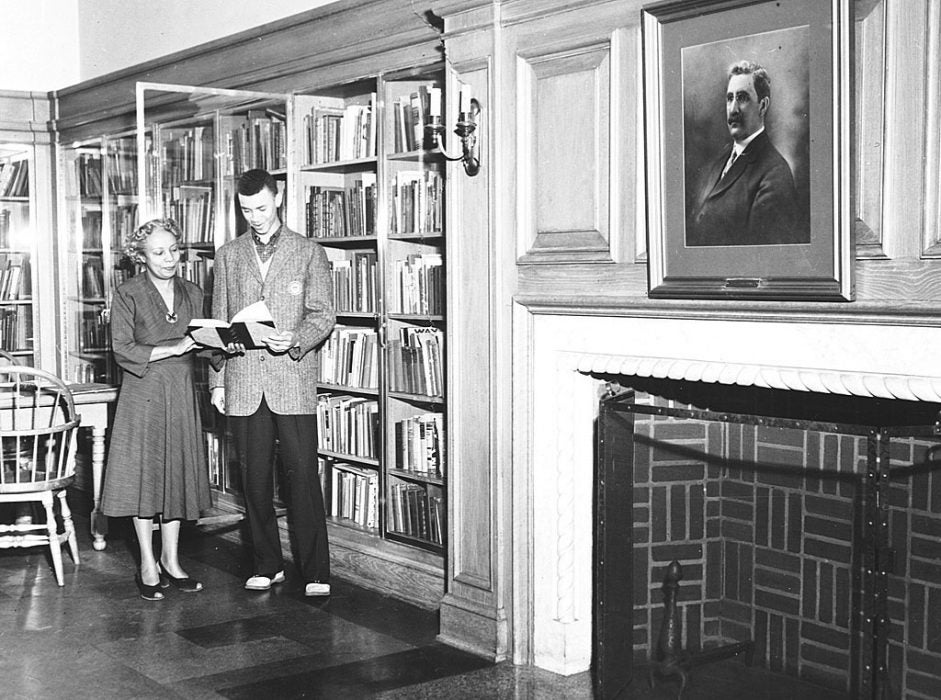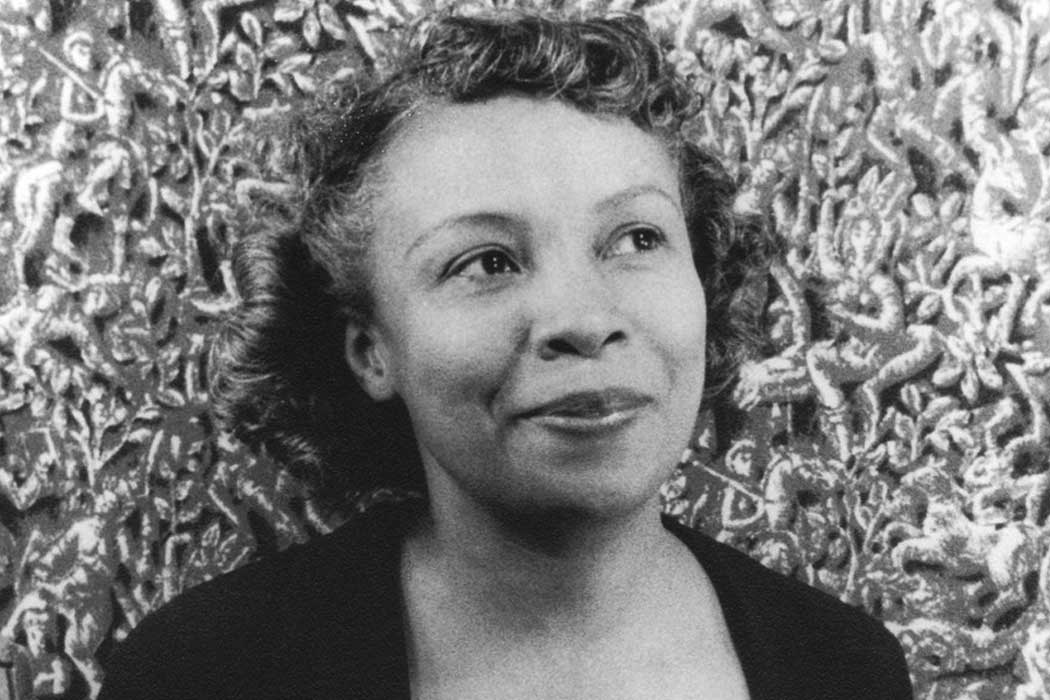For more than 150 years, Howard University has been associated with the highest caliber of scholarship on the African diaspora. Howard’s legacy as a hub for the intellectual exploration of Blackness is widely appreciated in the Africana subset of academia. Lesser known is the woman who conceived and facilitated the development of Howard’s wealth of archival resources into one of the primary centers for the study of people of African descent. The story of Dorothy Porter Wesley, a pioneer in the field of library and information science, is also the story of the triumphant beginnings of a new discipline. As a result of Porter’s vision and dedication, Black special collections began to occupy more prominent roles in their institutions, allowing engagement with historically marginalized narratives through the palpable past.
The Moorland-Spingarn Research Center, an administrative unit containing the libraries, university archives, museum, and additional special collections at Howard University is the realization of a vision from centuries past. During the Reconstruction, former Union general Otis Howard and his supporters in Washington, D.C., founded the university that bears his name. From its inception, the school was to have a library. The first board members, many of whom were prominent figures in the local Black community or wealthy northern abolitionists, donated swaths of manuscript material, mostly concerning Africa and abolitionism.
These contributions reflected a wave of interest in studying Black history that coincided with the introduction of Black historical societies across the country in the late nineteenth and early twentieth centuries. In significant numbers, the Emancipated were reclaiming a history that white supremacy attempted to erase. After hundreds of years of white people in the United States denying Black people their agencies, histories, languages, and cultures, the very act of consolidating materials for study was radical, and the undercurrent of this practice is the genesis of a dedicated examination of Blackness.
Growing in an ebb and flow of major donations and smaller, continuous gifts, the Moorland-Spingarn Research Center evolved from a one-room study in 1917 to a large-scale Foundation by the turn of the century. The University accepted donations of personal libraries and papers, including first editions and other rare texts and writings from Howard and his contemporaries. The generosity of donors was not unique to the University. Wherever freedmen settled, one of the first institutions in their communities was a school, and teachers were highly regarded. Additionally, wealthy, white, northern philanthropists felt strongly that contributing to the education of the formerly enslaved would partially atone for the “earthly torment” of the Atlantic Slave Trade. In these respects, the origins of Howard’s collections are comparable to those of peer institutions, although the school’s Du Boisian ethos differentiated it from its primarily vocational contemporaries.

By the 1930s, Howard University was one of the premier academic establishments for Black elites and their progeny. Sixty-five years removed from enslavement, the first generation of Howard graduates made way for a new crop. Among this number was Dorothy Porter.
Born on May 25, 1904, to a middle-class family in Virginia, Dorothy Louise enjoyed a comfortable lifestyle, supported by her parents, the Burnetts. Her father Hayes Joseph Burnett, was a physician, and her mother Bertha (née Ball) was a tennis pro-turned-homemaker. As a girl, Porter’s family moved to suburban Montclair, New Jersey, where she and her three younger siblings grew up. In 1923, Porter moved to Washington, D.C., to attend Miner Normal School, receiving a diploma two years later.
An avid bibliophile and writer, Porter earned a bachelor’s degree from Howard, then made her way to New York at the height of the Harlem Renaissance, where she became acquainted with some of the movement’s biggest names. Throughout her education, she coupled her passion for Africana with her interest in cataloguing and preservation. She persevered through discouragement and discrimination, becoming the first Black woman to receive a library science degree from Columbia.
Want more stories like this one?
Toward the end of her time in the city, Porter accepted an offer from Howard’s president to join the administrative staff as chief librarian. Her objective was to provide improved access to the Moorland-Spingarn Center’s sprawling collections. From her appointment in 1930 until her retirement 43 years later, Porter “devoted herself to developing a modern research library” in service to both the school and “an international community of scholars.” She did this despite working with far fewer resources than were ideal, battling constantly to maintain the quality and values of the Moorland-Spingarn Center. Her improvements included a more functional classification system; the development of research tools to facilitate engagement with the collections; and a series of bibliographies, reflecting her subject-matter expertise. These efforts, combined with an ambitious expansion of scope, holdings, and partnerships, established Howard as an authority in the new field of Black Studies.
With Porter’s departure in 1973, a new period in Moorland’s history began. The research center had received a sizeable grant from the Ford Foundation in 1970, which enabled a complete restructuring of the Center’s administration and funded the addition of dozens of staff to accommodate the massive collection. Coinciding with a second wave in Black higher education, the grant represented a renewed commitment to Black Studies, which was then an undeniably robust discipline.
Between World War I and World War II, a “surge in black internationalism” increased demand for information on Africana history, for analysis of the current state of Black people all over the world, and for theories of progress and liberation from the foremost Black thinkers in academia, politics, and industry. Porter sought to grow Howard’s collections accordingly. Additionally, in this era and the continuing decades was the proliferation of Afrocentric ideologies which existed symbiotically with Black collections. Material concerning Pan-Africanism, Black nationalism, Black feminism, Black liberation theology, womanism, social justice, and fundamental explorations of democracy and human nature found homes at institutions like Moorland.
Black libraries and archives also began to swell with donations from those outside of strictly intellectual spheres. Black people decided to gather the tangible evidence of their legacies and asserted the worth of that material as part of the cultural and historical canon. From W.E.B. Du Bois’s groundbreaking display at the 1900 Worlds Fair to the donations made to Moorland-Spingarn by Howard alumni, the recognition of the Black experience as a viable scholarly pursuit—one requiring primary documentation—facilitated the growth of Black collections and undergirded the emergence of Black Studies.
The mutual support between Black Studies and Black information science is visible in several ways: First, Black collections are sources for further exploration and scholarship concerning Black identity. They contain a wealth of knowledge that supports, augments, and inspires not only Black Studies, but potentially also any investigation pertaining to people of the African diaspora. In acting as a reservoir for these intellectual products, Black libraries and archives serve as a physical historiography of Black thought. The adoption of digital technologies, which allow for an increasingly international and multifaceted approach to the exploration of Blackness, extends this function.
Further, Black collections are proof of a counter-narrative, and fuel for expanded insight into Black experiences, past, present, and future. Members of the information science community—librarians, archivists, curators, and others—are no strangers to the biases that dismissed Black history for centuries. In this context, collections like those at the Moorland-Spingarn Research Center are radical sites of resistance. And while “there is no perfect archive, where every historical question is answered clearly and without need for interpretation and imagination,” the materials at Moorland move Black people, and the larger society, closer to a more complete understanding of ourselves.
Lastly, Black collections offer us the opportunity to ask: What is the impetus for the archive? Black collections force us to re-envision the central concept, to understand the archive as a location of knowledge-creation, of synthesis and analysis instead of purely behaving as a dispensary. Without a doubt, “the formation of new narratives” from Black collections is how the legacy of Black people “becomes public and part of the public imagination.”
For example, last year, the director Raoul Peck spoke at the Schomburg Center, another seminal research and educational institution in Black history and culture, about the role of archives in the creation of his films. (He had just released the critically acclaimed documentary on James Baldwin, I Am Not Your Negro; his other films include the uncompromising, radical Lumumba and Fatal Assistance.) Additionally, the recent publication of Zora Neale Hurston’s novel, Barracoon, illustrates the importance of Black archival practice. Hurston’s story was preserved in a Black collection for decades, dilligently waiting for a time when the world would be ready to engage with it.
In part because of our unforgiving approach to seeking out and processing information, we rarely stop to trace back the origins of our content. Fortunately, visionaries like Dorothy Porter kept these pieces of our history safe.







